- Home
- Mark Twain
Prince and the Pauper (Barnes & Noble Classics Series) Page 25
Prince and the Pauper (Barnes & Noble Classics Series) Read online
Page 25
Questions
1. In literature, deviations from plausible reality are sometimes caused by the author’s inattention or ignorance. Sometimes the writer wants to achieve satire or burlesque, allegory or symbolism. Which do you think is the case here?
2. The subtitle of The Prince and the Pauper is “A Tale for Young People of All Ages.” What can such a description mean? Would the book be better if it had been written expressly for young or for mature readers?
3. Who or what does Twain blame for the poverty, crime, and misery in this novel?
4. Do you see the novel as a satire of idealized or romanticized fictions about the “merrie olde England” of the medieval and renaissance periods?
5. Is Twain’s depiction of Tudor England convincing? Is it convincing only for people who do not have expert knowledge of the era? How does Twain achieve plausibility for the rest of us? When he fails, what causes the failure?
6. Would you say this novel has a motive? Does it try to make a point? Does it try to convince us about something? Warn us about something? Criticize or advocate something? Or do you think Twain’s purpose was simply to tell a good story, make money, or prove he was not just a humorist?
FOR FURTHER READING
Camfield, Gregg, ed. The Oxford Companion to Mark Twain. New York: Oxford University Press, 2003. A new and excellent encyclopedic volume on all aspects of Twain’s life and career.
Fishkin, Shelley Fisher, ed. A Historical Guide to Mark Twain. New York: Oxford University Press, 2002. A volume that places Twain in historical context.
Kaplan, Fred. The Singular Mark Twain: A Biography. New York: Doubleday, 2003. The latest and most comprehensive biography of Mark Twain.
Kaplan, Justin. Mark Twain and His World. New York: Simon and Schuster, 1974. A lively illustrated overview of Twain’s life and times.
. Mr. Clemens and Mark Twain. New York: Simon and Schuster, 1966. A classic biography on a classic subject; winner of the 1967 Pulitzer Prize for biography.
Robinson, Forrest G., ed. The Cambridge Companion to Mark Twain. New York: Cambridge University Press, 1995. A thoughtful collection of critical essays.
Ward, Geoffrey, ed. Mark Twain. New York: Alfred A. Knopf, 2001. A companion to the recent PBS documentary directed by Ken Burns.
a Parker was not a cranky, old-fashioned New England divine. He was the first Congregationalist minister in the Northeast to celebrate Christmas.
b Play on words: Offal refers to the entrails and internal organs of a slaughtered animal; pudding, in this case, is archaic slang for “offal.”
c The practice of begging.
d Soft cloth or leather boots.
e Raiment is an archaic term for clothing; lackeys are male servants, especially foot-men in livery (uniform).
t Archaic term for keeper of small amounts of money.
f See Twain’s note 1, p. 211.
t Indeed; Tudor- and Elizabethan-era oath derived from the practice of swearing by the Virgin Mary.
‡ Gallows; also used to display the dead body of the executed.
g See Twain’s note 2, p. 211.
h Archaic form of “perhaps.”
i See Twain’s note 3, p. 211.
j Curse me.
k Starched frilled or pleated collar of lace, muslin, or other fine fabric worn by men and women in the sixteenth and seventeenth centuries.
l See Twain’s note 4, p. 212.
m See Twain’s note 5, p. 212.
n Richly embroidered tapestry or other fabric, named for the French town of its origin.
o Soldiers armed with halberds—that is, long-handled weapons equipped with both spear and battle-ax.
t Loose, embroidered tunic worn over armor and emblazoned with the wearer’s coat of arms.
‡ Or miniver; white fur used to trim the edges of ceremonial costumes.
§ Pourpoints are quilted military doublets (closefitting jackets); damask is a patterned fabric of silk, linen, wool, or cotton.
p Hunting breeches (French).
q Rendered fat of horses, cattle, sheep, or pigs, used in cheap candles and soaps.
† Unkempt; slovenly.
r Low, slapstick pantomimes.
s Infect, or corrupt; a canker is a rotting or spreading sore.
† Loyal; faithful.
t See Twain’s note 6, p. 212.
u Closefitting jackets, with or without sleeves.
v Archaic form of mummery (see footnote on p. 54).
w See Twain’s note 7, pp. 212-213.
x Thin mucous discharges; similar to humors, thought in Tudor times to cause disease.
y He refers to the order of baronets, or baronettes,—the barones minores, as distinct from the parliamentary barons;—not, it need hardly be said, the baronets of later creation (Twain’s note).
z The lords of Kingsale, descendants of De Courcy, still enjoy this curious privilege (Twain’s note).
aa Misled or deceived through trickery.
ab Hume (Twain’s note).
† Hume (Twain’s note).
ac See Twain’s note 8, p. 213.
ad Certainly; truly (archaic).
ae See Twain’s notes to chapter XV, p. 213.
af Leigh Hunt’s The Town, p. 408. Quotation from an early tourist (Twain’s note).
ag From “The English Rogue”: London, 1665 (Twain’s note).
t Canting terms for various kinds of thieves, beggars, and vagabonds and their female companions (Twain’s note).
ah See Twain’s note 10, p. 214.
ai In truth! Indeed!
aj Fire made of twigs and sticks.
ak That is, a miniscule sum; a farthing is a former English coin worth about a quarter of a penny.
al Clumsy.
t Wooden weapons used in hand-to-hand combat: A singlestick is a sword-length piece of wood fitted with a hand guard; a quarterstaff is a stout, eight- to nine-foot staff traditionally held at the middle of its length.
am From “The English Rogue”: London, 1665 (Twain’s note).
an Thirteen and a half pennies; one and a half pennies more than a shilling (former English coin equal to twelve pence).
ao See Twain’s notes to chapter XXIII, pp. 214-215.
ap Gibberish Latin meaning, “Not of sound mind law of retaliation thus passes the glory of the world.”
t Gibberish Latin meaning, “To the person purify the existing state of affairs.”
aq Rude rustic man; churl.
ar See Twain’s notes to chapter XXVII, p. 215.
as Hume’s England (Twain’s note).
at See Twain’s notes to chapter XXXIII, pp. 215-217.
au See Dr. J. Hammond Trumbull’s Blue Laws, True and False, p. 11 (Twain’s note).

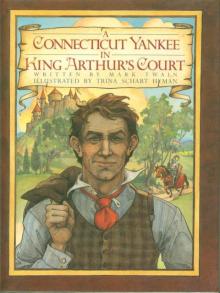 A Connecticut Yankee in King Arthur's Court
A Connecticut Yankee in King Arthur's Court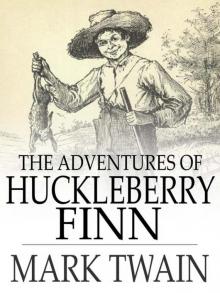 Adventures of Huckleberry Finn
Adventures of Huckleberry Finn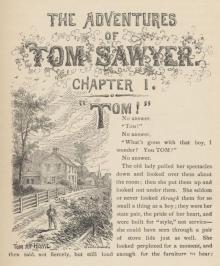 The Adventures of Tom Sawyer, Part 1.
The Adventures of Tom Sawyer, Part 1.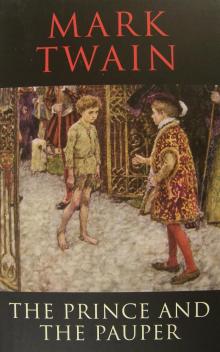 The Prince and the Pauper
The Prince and the Pauper The American Claimant
The American Claimant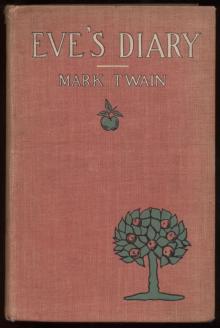 Eve's Diary, Complete
Eve's Diary, Complete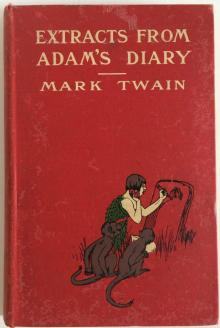 Extracts from Adam's Diary, translated from the original ms.
Extracts from Adam's Diary, translated from the original ms.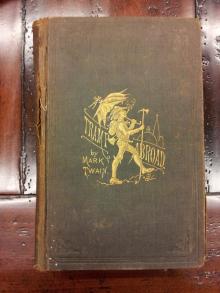 A Tramp Abroad
A Tramp Abroad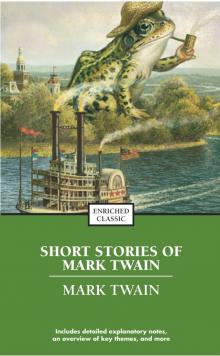 The Best Short Works of Mark Twain
The Best Short Works of Mark Twain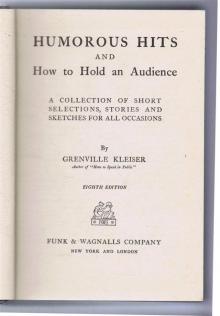 Humorous Hits and How to Hold an Audience
Humorous Hits and How to Hold an Audience The Speculative Fiction of Mark Twain
The Speculative Fiction of Mark Twain The Facts Concerning the Recent Carnival of Crime in Connecticut
The Facts Concerning the Recent Carnival of Crime in Connecticut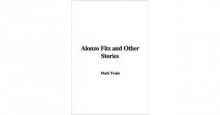 Alonzo Fitz, and Other Stories
Alonzo Fitz, and Other Stories The $30,000 Bequest, and Other Stories
The $30,000 Bequest, and Other Stories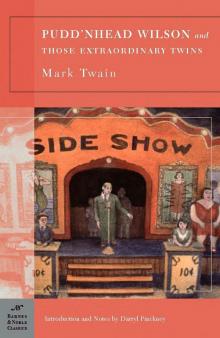 Pudd'nhead Wilson and Those Extraordinary Twins
Pudd'nhead Wilson and Those Extraordinary Twins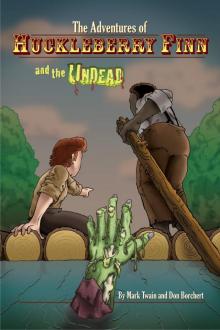 The Adventures of Huckleberry Finn and the Undead
The Adventures of Huckleberry Finn and the Undead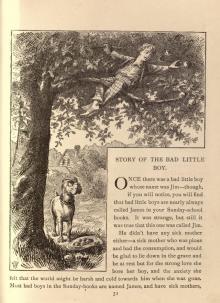 Sketches New and Old
Sketches New and Old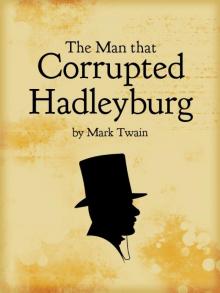 The Man That Corrupted Hadleyburg
The Man That Corrupted Hadleyburg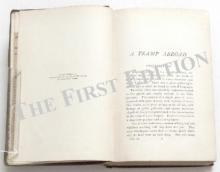 A Tramp Abroad — Volume 06
A Tramp Abroad — Volume 06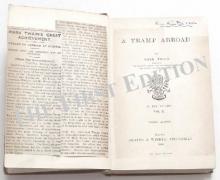 A Tramp Abroad — Volume 02
A Tramp Abroad — Volume 02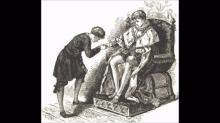 The Prince and the Pauper, Part 1.
The Prince and the Pauper, Part 1. Adventures of Huckleberry Finn, Chapters 16 to 20
Adventures of Huckleberry Finn, Chapters 16 to 20 The Prince and the Pauper, Part 9.
The Prince and the Pauper, Part 9.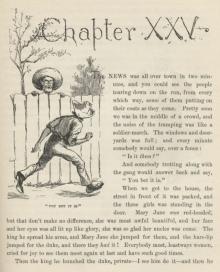 Adventures of Huckleberry Finn, Chapters 21 to 25
Adventures of Huckleberry Finn, Chapters 21 to 25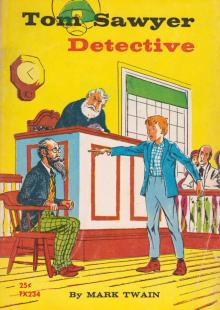 Tom Sawyer, Detective
Tom Sawyer, Detective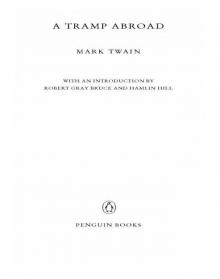 A Tramp Abroad (Penguin ed.)
A Tramp Abroad (Penguin ed.)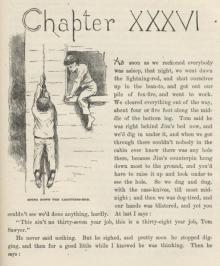 Adventures of Huckleberry Finn, Chapters 36 to the Last
Adventures of Huckleberry Finn, Chapters 36 to the Last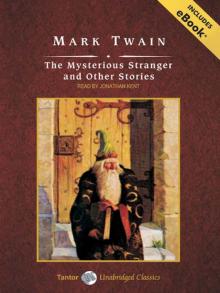 The Mysterious Stranger, and Other Stories
The Mysterious Stranger, and Other Stories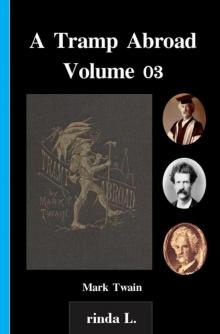 A Tramp Abroad — Volume 03
A Tramp Abroad — Volume 03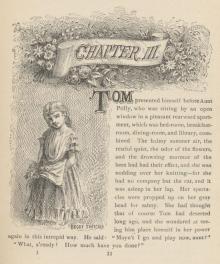 The Adventures of Tom Sawyer, Part 3.
The Adventures of Tom Sawyer, Part 3. Adventures of Huckleberry Finn, Chapters 06 to 10
Adventures of Huckleberry Finn, Chapters 06 to 10_preview.jpg) The Adventures of Huckleberry Finn (Tom Sawyer's Comrade)
The Adventures of Huckleberry Finn (Tom Sawyer's Comrade)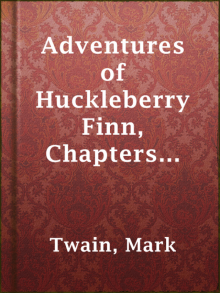 Adventures of Huckleberry Finn, Chapters 31 to 35
Adventures of Huckleberry Finn, Chapters 31 to 35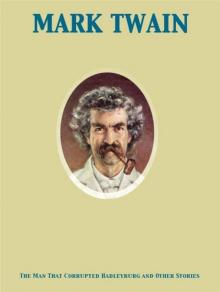 The Man That Corrupted Hadleyburg, and Other Stories
The Man That Corrupted Hadleyburg, and Other Stories A Tramp Abroad — Volume 07
A Tramp Abroad — Volume 07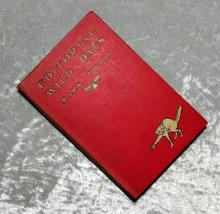 Editorial Wild Oats
Editorial Wild Oats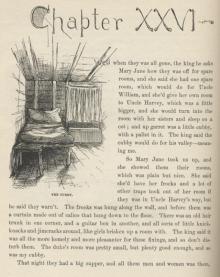 Adventures of Huckleberry Finn, Chapters 26 to 30
Adventures of Huckleberry Finn, Chapters 26 to 30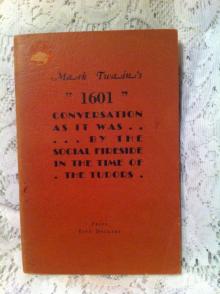 1601: Conversation as it was by the Social Fireside in the Time of the Tudors
1601: Conversation as it was by the Social Fireside in the Time of the Tudors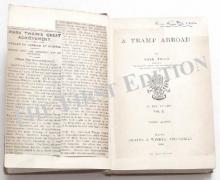 A Tramp Abroad — Volume 05
A Tramp Abroad — Volume 05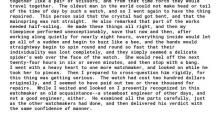 Sketches New and Old, Part 1.
Sketches New and Old, Part 1.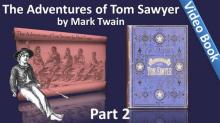 The Adventures of Tom Sawyer, Part 2.
The Adventures of Tom Sawyer, Part 2.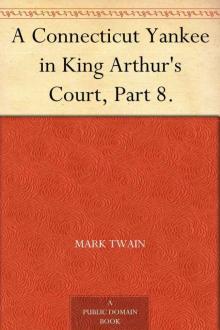 A Connecticut Yankee in King Arthur's Court, Part 8.
A Connecticut Yankee in King Arthur's Court, Part 8. A Tramp Abroad — Volume 01
A Tramp Abroad — Volume 01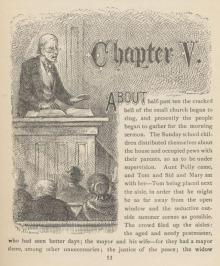 The Adventures of Tom Sawyer, Part 5.
The Adventures of Tom Sawyer, Part 5. Adventures of Huckleberry Finn, Chapters 01 to 05
Adventures of Huckleberry Finn, Chapters 01 to 05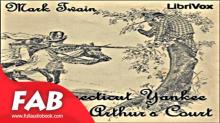 A Connecticut Yankee in King Arthur's Court, Part 1.
A Connecticut Yankee in King Arthur's Court, Part 1.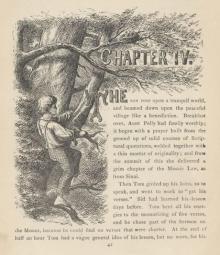 The Adventures of Tom Sawyer, Part 4.
The Adventures of Tom Sawyer, Part 4. A Connecticut Yankee in King Arthur's Court, Part 2.
A Connecticut Yankee in King Arthur's Court, Part 2.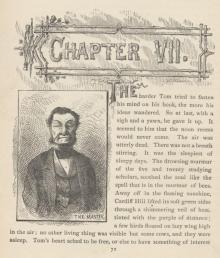 The Adventures of Tom Sawyer, Part 7.
The Adventures of Tom Sawyer, Part 7.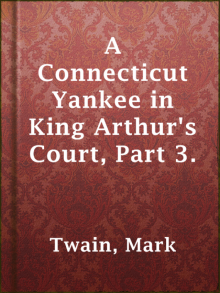 A Connecticut Yankee in King Arthur's Court, Part 3.
A Connecticut Yankee in King Arthur's Court, Part 3.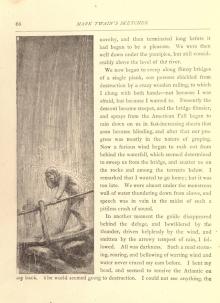 Sketches New and Old, Part 4.
Sketches New and Old, Part 4.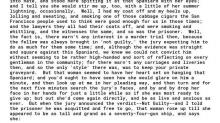 Sketches New and Old, Part 3.
Sketches New and Old, Part 3.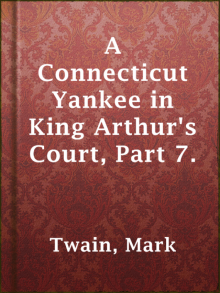 A Connecticut Yankee in King Arthur's Court, Part 7.
A Connecticut Yankee in King Arthur's Court, Part 7. A Connecticut Yankee in King Arthur's Court, Part 5.
A Connecticut Yankee in King Arthur's Court, Part 5.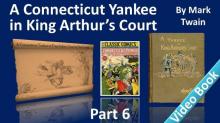 A Connecticut Yankee in King Arthur's Court, Part 6.
A Connecticut Yankee in King Arthur's Court, Part 6.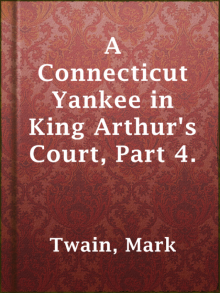 A Connecticut Yankee in King Arthur's Court, Part 4.
A Connecticut Yankee in King Arthur's Court, Part 4. Sketches New and Old, Part 2.
Sketches New and Old, Part 2.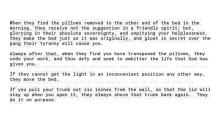 Sketches New and Old, Part 6.
Sketches New and Old, Part 6. Adventures of Huckleberry Finn, Chapters 11 to 15
Adventures of Huckleberry Finn, Chapters 11 to 15 Personal Recollections of Joan of Arc
Personal Recollections of Joan of Arc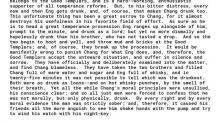 Sketches New and Old, Part 5.
Sketches New and Old, Part 5. Eve's Diary, Part 3
Eve's Diary, Part 3 Sketches New and Old, Part 7.
Sketches New and Old, Part 7.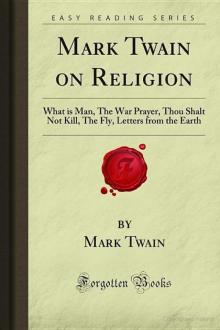 Mark Twain on Religion: What Is Man, the War Prayer, Thou Shalt Not Kill, the Fly, Letters From the Earth
Mark Twain on Religion: What Is Man, the War Prayer, Thou Shalt Not Kill, the Fly, Letters From the Earth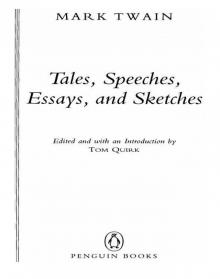 Tales, Speeches, Essays, and Sketches
Tales, Speeches, Essays, and Sketches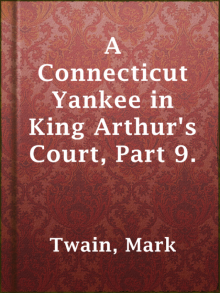 A Connecticut Yankee in King Arthur's Court, Part 9.
A Connecticut Yankee in King Arthur's Court, Part 9. Our Fellow Savages of the Sandwich Islands (version 1)
Our Fellow Savages of the Sandwich Islands (version 1) 1601
1601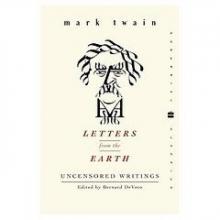 Letters from the Earth
Letters from the Earth Curious Republic Of Gondour, And Other Curious Whimsical Sketches
Curious Republic Of Gondour, And Other Curious Whimsical Sketches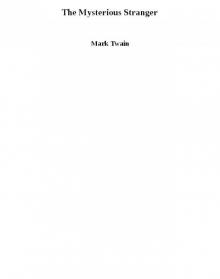 The Mysterious Stranger
The Mysterious Stranger Life on the Mississippi
Life on the Mississippi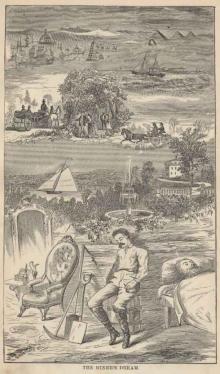 Roughing It
Roughing It Alonzo Fitz and Other Stories
Alonzo Fitz and Other Stories The 30,000 Dollar Bequest and Other Stories
The 30,000 Dollar Bequest and Other Stories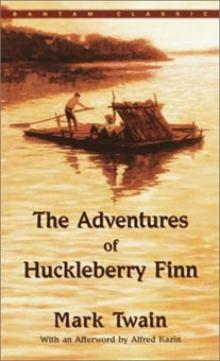 The Adventures of Huckleberry Finn taots-2
The Adventures of Huckleberry Finn taots-2 A Double-Barreled Detective Story
A Double-Barreled Detective Story adam's diary.txt
adam's diary.txt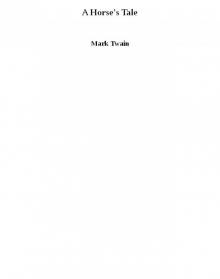 A Horse's Tale
A Horse's Tale Autobiography Of Mark Twain, Volume 1
Autobiography Of Mark Twain, Volume 1 The Comedy of Those Extraordinary Twins
The Comedy of Those Extraordinary Twins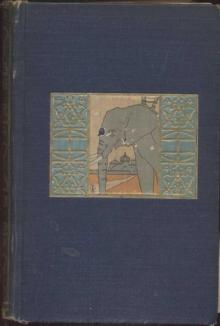 Following the Equator
Following the Equator Goldsmith's Friend Abroad Again
Goldsmith's Friend Abroad Again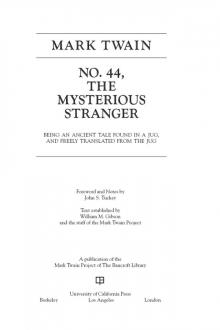 No. 44, The Mysterious Stranger
No. 44, The Mysterious Stranger The Stolen White Elephant
The Stolen White Elephant The $30,000 Bequest and Other Stories
The $30,000 Bequest and Other Stories The Curious Republic of Gondour, and Other Whimsical Sketches
The Curious Republic of Gondour, and Other Whimsical Sketches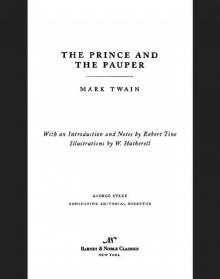 Prince and the Pauper (Barnes & Noble Classics Series)
Prince and the Pauper (Barnes & Noble Classics Series) The Portable Mark Twain
The Portable Mark Twain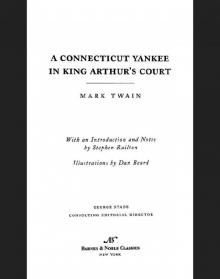 Connecticut Yankee in King Arthur's Court (Barnes & Noble Classics Series)
Connecticut Yankee in King Arthur's Court (Barnes & Noble Classics Series) The Adventures of Tom Sawyer taots-1
The Adventures of Tom Sawyer taots-1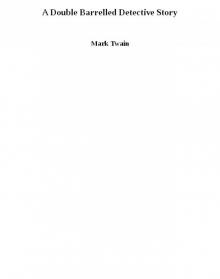 A Double Barrelled Detective Story
A Double Barrelled Detective Story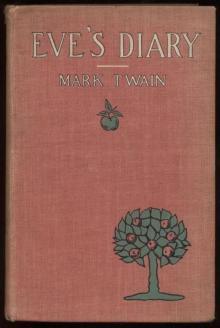 Eve's Diary
Eve's Diary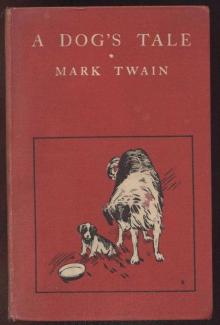 A Dog's Tale
A Dog's Tale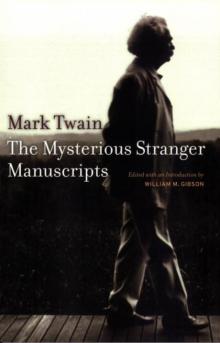 The Mysterious Stranger Manuscripts (Literature)
The Mysterious Stranger Manuscripts (Literature)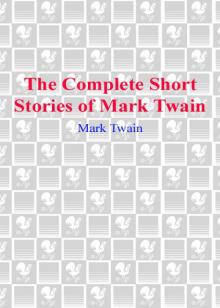 The Complete Short Stories of Mark Twain
The Complete Short Stories of Mark Twain What Is Man? and Other Essays
What Is Man? and Other Essays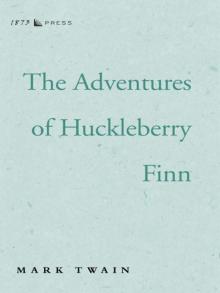 The Adventures of Huckleberry Finn
The Adventures of Huckleberry Finn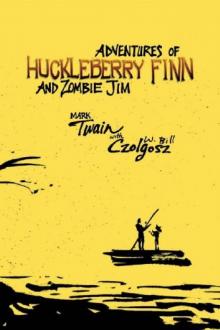 Adventures of Huckleberry Finn and Zombie Jim
Adventures of Huckleberry Finn and Zombie Jim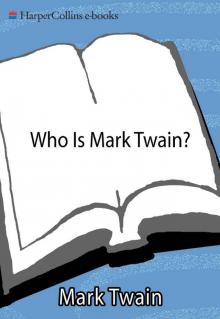 Who Is Mark Twain?
Who Is Mark Twain? Christian Science
Christian Science The Innocents Abroad
The Innocents Abroad Some Rambling Notes of an Idle Excursion
Some Rambling Notes of an Idle Excursion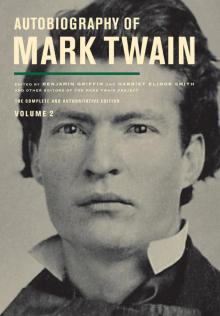 Autobiography of Mark Twain
Autobiography of Mark Twain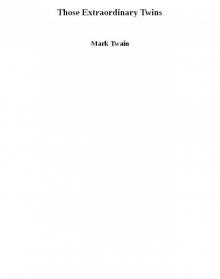 Those Extraordinary Twins
Those Extraordinary Twins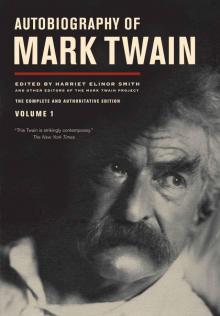 Autobiography of Mark Twain: The Complete and Authoritative Edition, Volume 1
Autobiography of Mark Twain: The Complete and Authoritative Edition, Volume 1